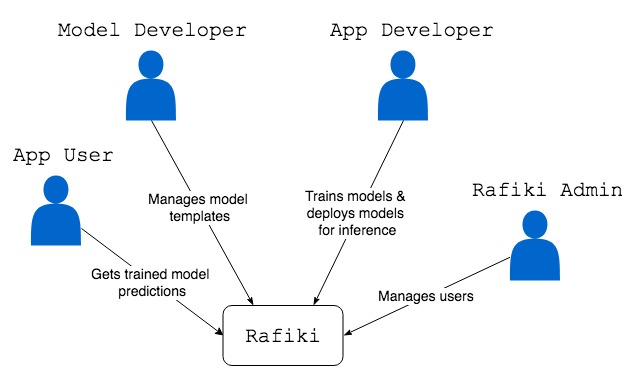Users of Rafiki¶

Users of Rafiki¶
There are 4 types of users on Rafiki:
Application Developers create, manage, monitor and stop model training and serving jobs on Rafiki. They are the primary users of Rafiki - they upload their datasets onto Rafiki and create model training jobs that train on these datasets. After model training, they trigger the deployment of these trained ML models as a web service that Application Users interact with. While their model training and serving jobs are running, they administer these jobs and monitor their progress.
Application Users send queries to trained models exposed as a web service on Rafiki, receiving predictions back. Not to be confused with Application Developers, these users may be developers that are looking to conveniently integrate ML predictions into their mobile, web or desktop applications. These application users have consumer-provider relationships with the aforementioned ML application developers, having delegated the work of training and deploying ML models to them.
Model Developers create, update and delete model templates to form Rafiki’s dynamic repository of ML model templates. These users are key external contributors to Rafiki, and represent the main source of up-to-date ML expertise on Rafiki, playing a crucial role in consistently expanding and diversifying Rafiki’s underlying set of ML model templates for a variety of ML tasks. Coupled with Rafiki’s modern ML model tuning framework on Rafiki, these contributions heavily dictate the ML performance that Rafiki provides to Application Developers.
Rafiki Admins create, update and remove users on Rafiki. They regulate access of the other types of users to a running instance of Rafiki.